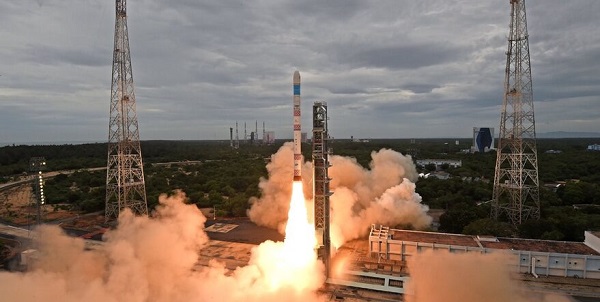Maiden SSLV Mission

From Current Affairs Notes for UPSC » Editorials & In-depths » This topic
IAS EXPRESS Vs UPSC Prelims 2024: 85+ questions reflected
What is SSLV?
- The SSLV or Small Satellite Launch Vehicle is considered as ISRO’s next workhorse rocket after PSLV and GSLV.
- It measures just 2 m in diameter and is 35 m tall, making it smaller than the PSLV.
- Note that PSLV is being deployed to carry satellites of varying masses into space, using it to launch small satellites with masses up to 500 kg is an overkill.
- The SSLV was developed to carry such smaller satellites with more ease and economy.
- This is because the 3-stage SSLV uses solid propellant as opposed to the liquid propellants used in the PSLV.
- It also has the flexibility to launch multiple satellites on demand as it requires only minimal launch infrastructure.

What is the SSLV-D1?
- SSLV-D1 or the EOS-2 mission marks the maiden launch of the SSLV. In this mission, the vehicle carried 2 satellites-
- Earth Observation Satellite-2 (EOS-2)
- It weighs 135 kg.
- It was designed and developed by ISRO.
- Purpose: enabling advanced remote sensing operations in the IR region for various applications like imaging for climate studies and earth observation.
- AzadiSAT
- It is an 8U CubeSat weighing about 8 kg.
- It is a collective of 75 smaller payloads, each weighing 50 g, integrated by students– including girls from rural areas.
- These are small experiments that sought to measure ionising radiations in the orbit, to enable amateurs to operate a transponder in ham radio frequency, etc.
- Earth Observation Satellite-2 (EOS-2)
- The satellites were to be placed in the circular low-Earth orbit, at an altitude of 350 km above the Equator.
- The launch took place from Satish Dhawan Space Centre, Sriharikota.
How did the mission go?
- The excitement over the ‘baby rocket’s’ launch turned into disappointment after it failed to place the satellites in the desired orbits. As a result, the satellites, which were detached from the SSLV, were lost.
- In a break from the tradition of silence, the ISRO announced the reasons for the failure without delay.
Why did this happen?
- Though the 3 stages of the SSLV performed according to expectations, issues arose in the terminal stage.
- A sensor malfunctioned and led to the satellites being placed in an elliptical orbit instead of the desired circular orbit.
- While circular orbits are defined by their radius, elliptical orbits are defined by long and short axes.
- The short axis of the elliptical orbit in which the satellites were placed was small. The satellites are only 76 km above the earth’s surface.
- At such a low altitude, the atmospheric drag would impede the satellites. Unless a huge thrust is provided, the satellites would lose height and eventually fall back to earth.
What is the way ahead?
- One aspect that stood out in this episode was the ISRO Chairman’s (S. Somanath) direct communication and the decision to make the initial analysis quickly available to all concerned.
- Elsewhere, space agencies invest a lot more in testing than ISRO does. While India’s approach is considered economical, low emphasis on testing could extract a cost down the lane.
- India needs to invest more in testing if it is to attract more commercial clients for its space sector.
Conclusion:
While the development of SSLV is yet another milestone in the ISRO story, there is a need to remember that in such circumstances, while success is remarkable, failures give a lesson that comes with a cost.
Practice Question for Mains:
Examine the significance of the recent SSLV mission and the reasons behind its failure. (250 words)
If you like this post, please share your feedback in the comments section below so that we will upload more posts like this.

